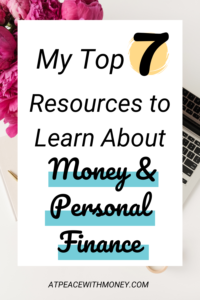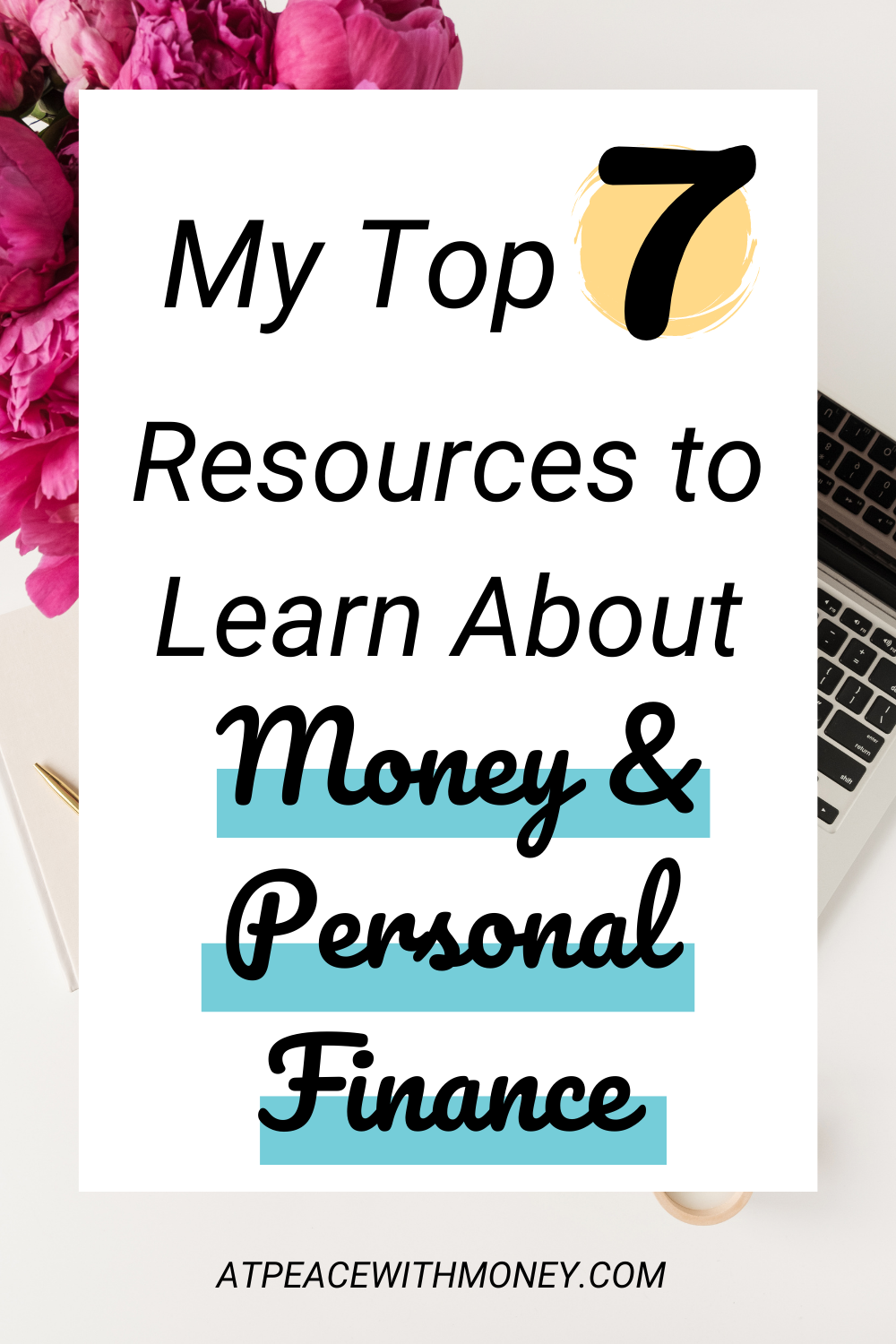My Top Resources to Learn About Money Around the Internet

There are a lot of places to seek out financial advice on the internet. Which is great news! Many of us don’t receive good education on finances when we are younger. When we become adults, we either don’t seek or don’t find the information we need to have healthy finances.
One of the main ways to fix this problem is very simple: self-education! Once you start learning about money and start paying attention to your own financial matter, the hardest part is over. And thanks to the Internet, that is easier than ever.
The last time I put out a resource list on financial education was 2018, and while those resources are all still wonderful, I thought it might be time for an update. So, without further ado, here are my current top resources to learn about money around the internet (plus a few books).
Business Finance Resources
Profit Boss Radio by Hilary Hendershott is a great resource on both business and personal finance topics. She focuses on financially empowering women to be financially successful business owners.
Hadassah Damien of Ride Free Fearless Money has become an inspiration of mine over the last few years. Her content is a mix of business and personal resources. She has an excellent blog, Diva is a Hustler, and a great podcast, Bottom Lines, Top Dollars.
Mikelann Valterra is an awesome money coach who has lots of great content that can apply to both personal and business/professional sides of finance. She has a blog and a whole tab of free resources. 
Personal Finance Resources
Afford Anything is Paula Pant’s podcast, chock-full of useful personal finance info and advice. She makes a lot of content specifically about investing and retirement.
The Bad With Money Podcast with Gaby Dunn is a great resource covering mostly personal finance topics that’s excellent for younger generations and queer folks who feel alienated by other finance resources. Gaby’s tagline say it all: “I’m a money podcast but I’m not scary.”
Karen McCall, creator of MoneyGrit (R), which is an excellent money management tool that I recommend for both personal and business finances, writes an excellent blog too! Her recent series on clothing deprivation and refreshing your wardrobe in a money-conscious way is a great resource.
Stacking Benjamins is a wonderful podcast I’ve been listening to for years. They provide great insights for overall financial learning and offer a lot of resources and interviews.
While we’re talking resources, I should probably mention that the At Peace With Money newsletter is a great free resource to subscribe to.
Subscribers receive my weekly blog posts straight to their inbox, plus a monthly tailored newsletter with customized financial tips. They also receive free access to my full library of e-Books! Click below to join us, it’s a good place to be!












 If a resource ticks all these boxes for you, it will probably set you down the path to financial wellbeing! And it will feel a lot better than trying to read something that just isn’t for you. Next time, we’ll talk about starting the search for resources. For now, feel free to do some good ol’ googling. You can also check out my article on
If a resource ticks all these boxes for you, it will probably set you down the path to financial wellbeing! And it will feel a lot better than trying to read something that just isn’t for you. Next time, we’ll talk about starting the search for resources. For now, feel free to do some good ol’ googling. You can also check out my article on 



 Now it’s time to find some good resources that meet your criteria. Some googling might help with this, but you can also check out my post on
Now it’s time to find some good resources that meet your criteria. Some googling might help with this, but you can also check out my post on 


 afternoon off, a fun or inspiring event, or whatever you’d like to do to celebrate your achievements so far! Being a self-starting solopreneur is hard work. If you’ve done the work, you deserve to cheer yourself on once in a while.
afternoon off, a fun or inspiring event, or whatever you’d like to do to celebrate your achievements so far! Being a self-starting solopreneur is hard work. If you’ve done the work, you deserve to cheer yourself on once in a while.


 When you’re making your plan, be sure to adapt your goals to what’s worked so far this year. If you really love a certain routine or feel fired up to keep working toward a certain goal, go for it. If you’ve stalled on a project because you need to do more research, carve out some time to go back to the drawing board. When charting your course, keep your own needs and preferences in mind.
When you’re making your plan, be sure to adapt your goals to what’s worked so far this year. If you really love a certain routine or feel fired up to keep working toward a certain goal, go for it. If you’ve stalled on a project because you need to do more research, carve out some time to go back to the drawing board. When charting your course, keep your own needs and preferences in mind.


 Claiming our power is an act of self love. When we honor and value ourselves and have the bravery and financial security to live our desires – that is real self love. This love ripples outwards, and makes a positive difference in the lives of those around us. By striving for what we really deserve, we can inspire and pave the way for a new generation of people ready to do the same. When we have the resources to donate to causes we agree with, we can heal the planet and help others achieve their dreams. When we claim our power, we can also extend that power to others.
Claiming our power is an act of self love. When we honor and value ourselves and have the bravery and financial security to live our desires – that is real self love. This love ripples outwards, and makes a positive difference in the lives of those around us. By striving for what we really deserve, we can inspire and pave the way for a new generation of people ready to do the same. When we have the resources to donate to causes we agree with, we can heal the planet and help others achieve their dreams. When we claim our power, we can also extend that power to others. 


 Finally, I want to add a note about the need for diversification. Any professional will tell you that it’s important not to put all your eggs in one basket.
Finally, I want to add a note about the need for diversification. Any professional will tell you that it’s important not to put all your eggs in one basket. 


 In my monthly newsletter (
In my monthly newsletter (


 Further Reading
Further Reading